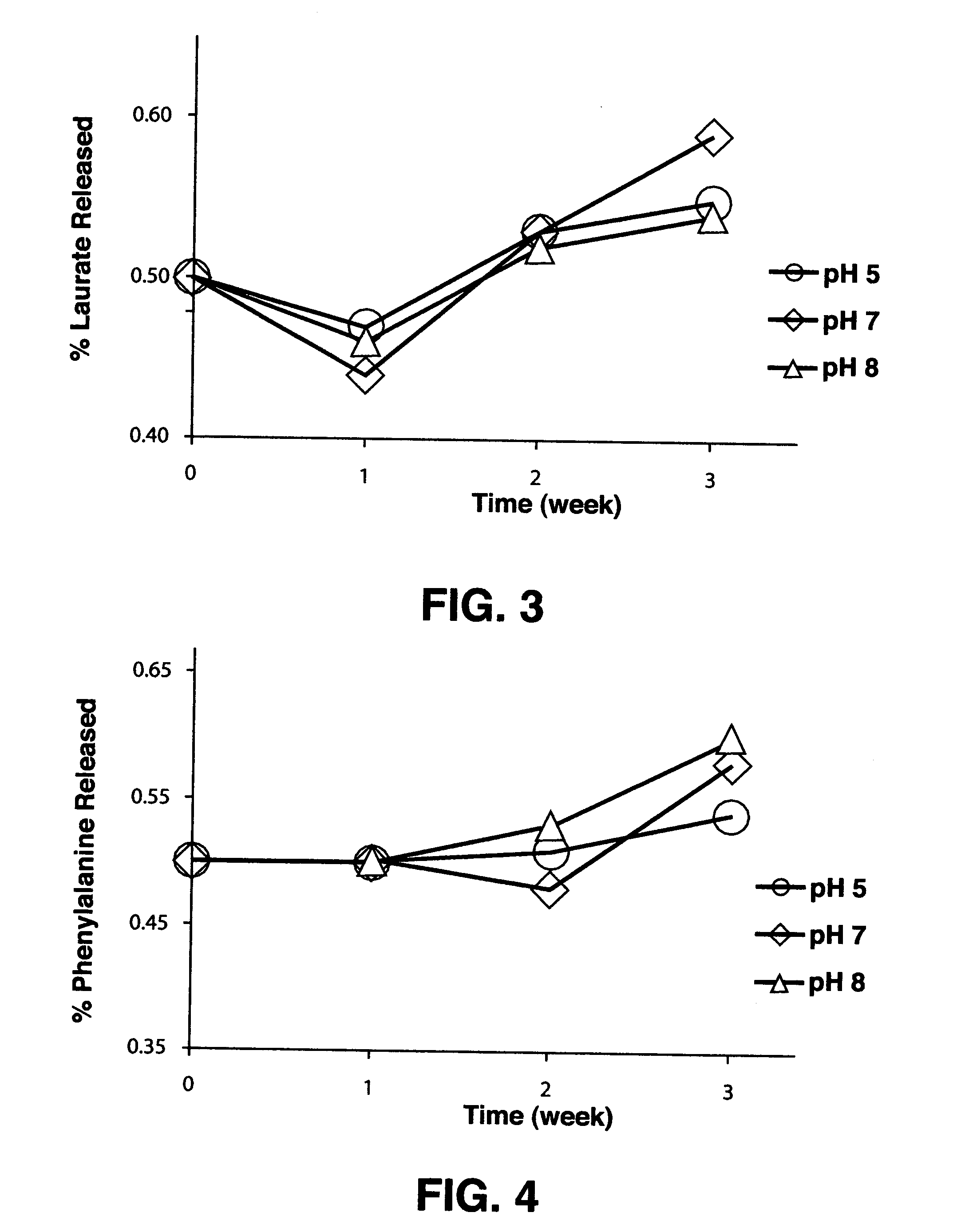Protein-carrier conjugates
a carrier and conjugate technology, applied in the field of protein-carrier conjugates, can solve the problems of non-biodegradability of polymers, reduce the shielding effect of carriers, and improve the access to enzymatics
- Summary
- Abstract
- Description
- Claims
- Application Information
AI Technical Summary
Benefits of technology
Problems solved by technology
Method used
Image
Examples
example 1
Preparation of 1,2-di-mPEG glycerol
[0037]A 1,2-di-mPEG glycerol was prepared by the following steps (Chemical reaction scheme 1) and the molecular weight of mPEG is ranging from 400 to 20,000.
Step 1: 1,2-Isopropylidenene-rac-glycerol-3-β,β,β-trichloroethylcarbonate (PRODUCT I)
[0038]A solution of 200 g (0.943 moles) of 2,2,2(β,β,β)-Trichloroethoxycarbonyl chloride in 100 mL of CHCl3 (fresh distilled from P205) was added drop-wise to an ice-cold mixture of 124.6 g (0.942 moles) of DL-1,2-Isopropylidene-rac-glycerol, 50 mL of dry pyridine and 100 mL of CHCl3. The solution was stirred at room temperature for 18 hrs, diluted with Et2O (800 mL), and wash with successively with dilute HCl, H2O, 5% NaHCO3 and H2O. The organic extract was dried with Na2SO4, then concentrated and distilled. To give a >85% of the colorless syrup: bp: 140-145° C. (0.25 mm Hg).
Step 2: β,β,β-trichloroethyl carbonate glycerol (PRODUCT II)
[0039]Method (A) Hydrolysis with HCl: a mixture of 126 g (0.41 moles) of PROD...
example 2
Preparation N-hydroxysuccinimide ester of 1,2-di-mPEG-3-glycerol
[0042]0.1 moles of 1,2-di-mPEG-3-glycerol was added in 250 mL of dried dioxane and warmed up until completely dissolved. Gradually added 100 mL dry tetrahydrofuran solution of 0.6 moles of N-succinimidyl chlorormate and 100 mL dry tetrahydrofuran solution of 0.6 moles of 4-(dimethylamino)pyridine. Let reacted for 3 hours under constantly stirring. Filtered out the white precipitate of 4-(dimethylamino)pyridine HCl and the supernatant was collected. Added diethylether to the supernatant until no further precipitate was observed and dried the product and stored at −20° C. (see Chemical Structure 3).
example 3
Preparation of εN-1,2-di-mPEG-3-glycerol-lysine
[0043]0.1 moles of Nα-(tert-butoxycarbonyl)-L-lysine and 0.11 moles of N-hydroxysuccinimide ester of 1,2-di-mPEG-3-glycerol were dissolved in 160 mL of 0.1 M sodium carbonate (pH 9.5). The reaction mixture was stirred at 25° C. for 12 hr and diluted with water. The precipitate is collected via filtration and dried under vacuo (Chemical Structure 4).
PUM
| Property | Measurement | Unit |
|---|---|---|
| Molar density | aaaaa | aaaaa |
| Molar density | aaaaa | aaaaa |
| Fraction | aaaaa | aaaaa |
Abstract
Description
Claims
Application Information
 Login to View More
Login to View More - R&D
- Intellectual Property
- Life Sciences
- Materials
- Tech Scout
- Unparalleled Data Quality
- Higher Quality Content
- 60% Fewer Hallucinations
Browse by: Latest US Patents, China's latest patents, Technical Efficacy Thesaurus, Application Domain, Technology Topic, Popular Technical Reports.
© 2025 PatSnap. All rights reserved.Legal|Privacy policy|Modern Slavery Act Transparency Statement|Sitemap|About US| Contact US: help@patsnap.com



